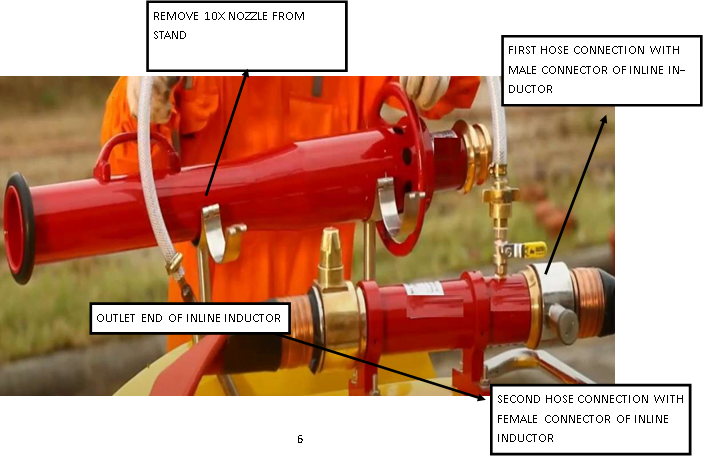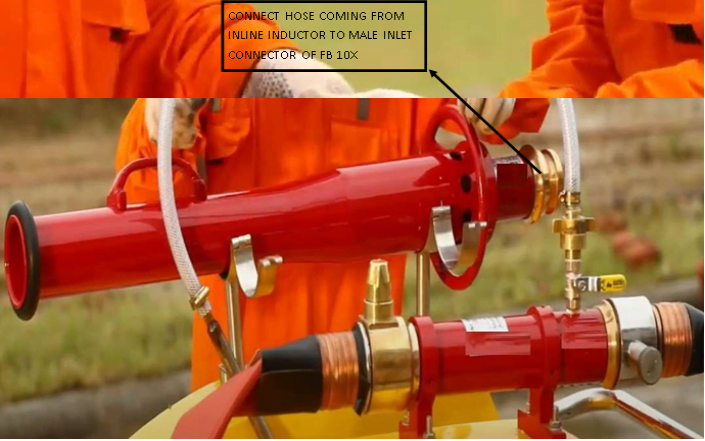4 Easy Steps to Operate Mobile Foam Kart: A Comprehensive Guide
Introduction:
Welcome to our comprehensive guide on mastering the operation of a Mobile Foam Kart. In the area of firefighting equipment, proficiency in handling such specialized apparatus can be a game-changer. Throughout this guide, we will provide you with detailed insights into operating a mobile foam trolley unit effectively, ensuring that you’re equipped with the knowledge to handle firefighting scenarios with confidence. Let’s dive in!
Understanding the Mobile Foam Kart:
What is a Mobile Foam Trolley Unit?
A mobile foam trolley unit is an indispensable piece of firefighting equipment designed for swiftly addressing flammable liquid fires. Its compact design and versatility make it an essential tool in the firefighting arsenal, allowing firefighters to combat fires efficiently and effectively.
Components of a Mobile Foam Trolley Unit
To operate a mobile foam trolley unit effectively, it’s essential to understand its key components:
-
✓
Foam Concentrate Tanks:
These tanks store the foam concentrate, which is mixed with water to produce firefighting foam. -
✓
Mixing System (Inline Inductor):
The mixing system blends the foam concentrate with water at the desired ratio, ensuring the optimal effectiveness of the foam. -
✓
Discharge Devices:
Various discharge devices, such as Low expansion foam branch pipe or medium expansion foam generator, are attached to the unit for applying foam onto the fire.
To know more about the components of Mobile Foam Trolley Kart and Price ranges – Click Here.
Operating Procedures of Mobile Foam Kart:
You can also visit video here.
Preparation of Mobile Foam Kart:
Proper preparation lays the foundation for successful firefighting operations with a mobile foam trolley unit. Here’s what you need to do:
- 1 Inspect Equipment: Conduct a thorough inspection of the Mobile foam kart to ensure that all components are in working order.
- 2 Check Foam Concentrate Levels: Verify that an adequate supply of foam concentrate is available in the tanks.
- 3 Ensure Water Supply: Confirm the availability of a reliable water source for mixing with the foam concentrate from hydrant line.
Startup Procedure to Operate Mobile Foam Kart:
Once the preparation phase is complete, follow these steps to start up the mobile foam trolley unit:
Key Takeaway
Remember these important insights as you continue reading.
- 1 Prime Pump: Prime the pump to establish water flow through the hydrant system.
- 2 Activate Water Supply: Open the Hydrant valve so as water can reach the inline inductor.
- 3 Adjust Foam Ratio: Set the desired foam concentration ratio on the Inline Inductor if option is available.
- 4 Discharge Devices: Verify the functionality of discharge devices to ensure proper operation.




Deployment of Mobile Foam Kart:
With the unit primed and ready, proceed with deploying the mobile foam trolley unit to the fire scene:
- 1 Positioning: Position the unit strategically at a safe distance from the fire, considering factors such as wind direction and potential hazards.
- 2 Engage Discharge: Activate the discharge devices to apply foam onto the fire, starting from the base and working upwards.
- 3 Monitor: Continuously monitor the application of foam to ensure thorough coverage and effective suppression of the fire.
- 4 Adjust as Needed: Adjust the flow rate and direction of foam discharge as necessary to optimize firefighting efforts.
Safety Considerations:
Operating a mobile foam kart unit demands strict adherence to safety protocols to mitigate risks and ensure the well-being of personnel. Here are some crucial safety considerations:
- ✓ Personal Protective Equipment (PPE): Wear appropriate PPE, including firefighting gear and respiratory protection, to minimize exposure to hazardous conditions.
- ✓ Emergency Procedures: Familiarize yourself with emergency shutdown procedures and evacuation protocols to respond swiftly to unforeseen circumstances or equipment malfunctions.
- ✓ Environmental Assessment: Continuously assess the fire conditions and environmental factors to adapt firefighting strategies and prioritize the safety of personnel and property.
Conclusion
In conclusion, mastering the operation of a mobile foam trolley unit is indispensable for firefighters entrusted with protecting lives and property from the ravages of flammable liquid fires. By understanding its components, following proper operating procedures, and prioritizing safety at all times, firefighters can harness the full potential of this versatile firefighting tool. Armed with knowledge and training, firefighters can confidently tackle firefighting scenarios, knowing that they have the expertise to operate mobile foam trolley units with precision and effectiveness. Stay safe, stay prepared, and never underestimate the importance of proficiency in operating firefighting equipment.
Frequently Asked Questions (FAQ) on How To Operate Mobile Foam Kart:
- 1 How does a mobile foam trolley kart differ from other firefighting equipment?
- ✓ A mobile foam trolley unit is specifically designed for combating flammable liquid fires by dispensing foam, whereas other equipment may have different functionalities suited for various types of fires.
- 1 What types of fires are suitable for extinguishing with a mobile foam trolley kart?
- ✓ Mobile foam trolley units are highly effective in extinguishing fires involving flammable liquids such as gasoline, diesel, and oil.
- 1 Can a mobile foam trolley kart be used indoors?
- ✓ While mobile foam trolley units can be used indoors, proper ventilation and safety precautions must be observed to prevent the accumulation of foam vapors.
- 1 How often should mobile foam trolley karts undergo maintenance?
- ✓ Regular maintenance schedules should be established based on manufacturer recommendations and regulatory requirements to ensure the reliability and performance of mobile foam trolley units.
- 1 Is training required to operate a mobile foam trolley Kart?
- ✓ Yes, comprehensive training in the operation and maintenance of mobile foam trolley units is essential for firefighters to effectively utilize this equipment during firefighting operations.
- 1 What factors should be considered when positioning a mobile foam kart at a fire scene?
- ✓ Factors such as wind direction, proximity to the fire, and potential hazards in the surrounding area should be carefully assessed when positioning a mobile foam trolley unit to optimize firefighting efforts.
- 1 Can mobile foam trolley karts be customized to meet specific firefighting requirements?
- ✓ Yes, mobile foam trolley units can be customized with additional features or accessories to accommodate specific firefighting scenarios or environmental conditions.
- 1 Are mobile foam trolley karts suitable for use in industrial settings?
- ✓ Yes, mobile foam trolley units are commonly employed in industrial settings where flammable liquids are present, offering an effective means of fire suppression.
- 1 How quickly can a mobile foam trolley karts be deployed in an emergency?
- ✓ With proper training and preparedness, mobile foam trolley units can be deployed rapidly to mitigate fire emergencies and prevent escalation.
- 1 Are there any regulatory standards governing the operation of mobile foam trolley karts?
- ✓ Yes, regulatory standards and guidelines exist to ensure the safe and effective operation of mobile foam trolley units, and compliance with these standards is essential for firefighting organizations.
Pingback: How FRP Mobile Foam Kart is essential for High Risk Areas
Pingback: How to Maintain FRP Mobile Foam Cart with Ease
Pingback: Mobile Foam Trolley Specifications : A Comprehensive Guide
Pingback: Comprehensive Guide to Fire Hydrants and Mobile Foam Trolleys
Pingback: Mobile Foam Units